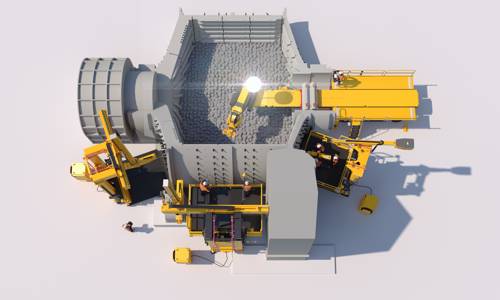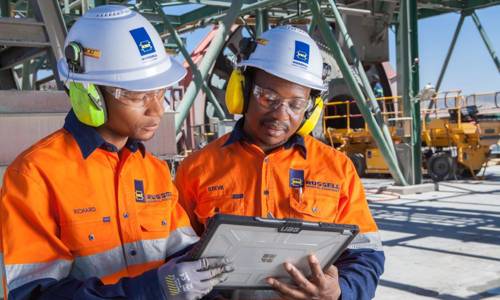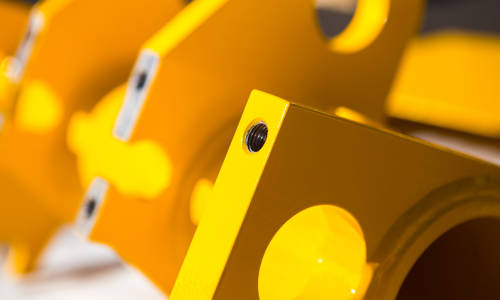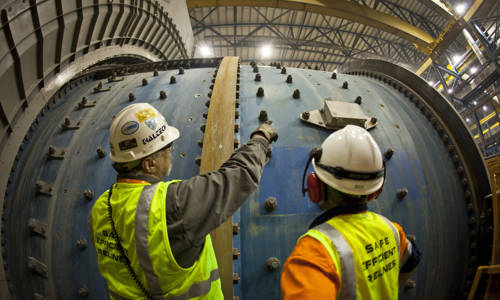23 June 2023
Women engineers help make safety seen – celebrating INWED 2023
In honour of International Women in Engineering Day (INWED) 2023, we proudly present an interview series featuring four of RME’s female engineers across a range of engineering disciplines.
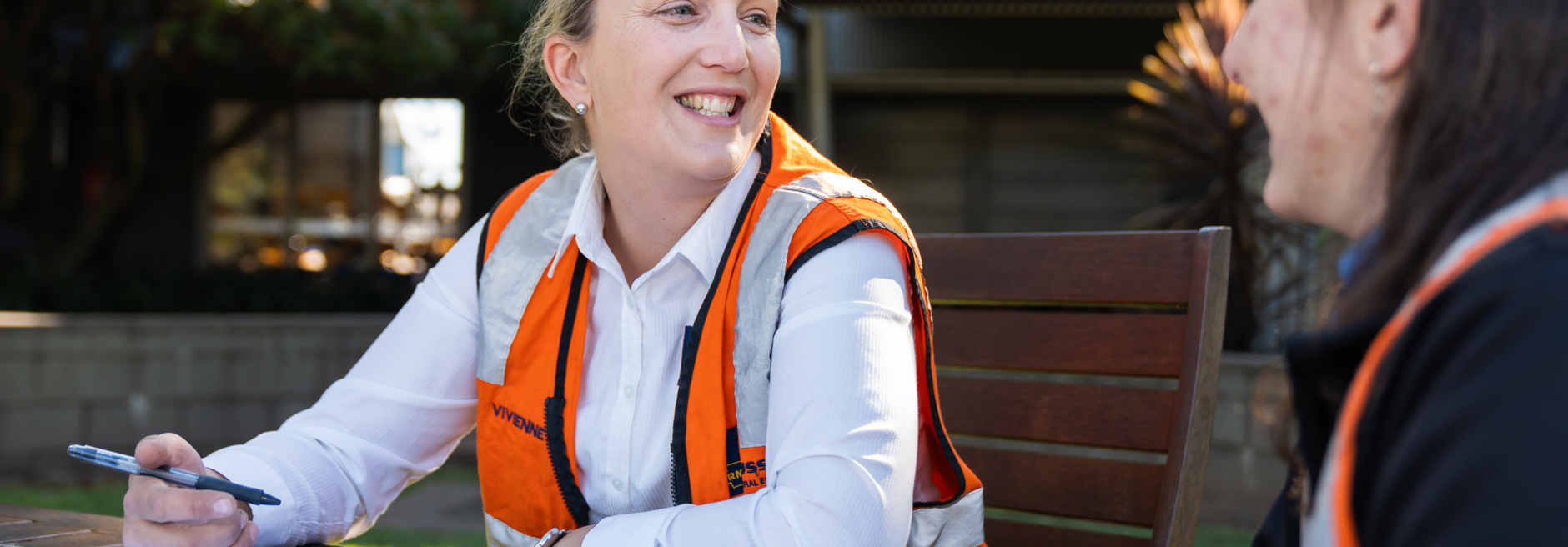
In honour of International Women in Engineering Day (INWED) 2023, we proudly present an interview series featuring four of RME’s female engineers across a range of engineering disciplines.
This year’s INWED theme ‘Make Safety Seen’, is important to RME as an organisation dedicated to engineering solutions that solve complex maintenance and safety challenges in mining.
We believe our diversity helps us to rise to these challenges.
It does this by fuelling our inventiveness, agility, culture and performance. It enables us to benefit from unique perspective, experience, talent and capability.
Diverse teams also create psychological safety, where each person feels included and respected, safe to contribute and safe to challenge, for the betterment of our company.
However, across our industry, even though participation of women in STEM has been steadily increasing, representation in the fields of mechanical and electrical engineering are still disproportionally low.*
Thank you Vivienne, Tara, Akanksha and Jessica. We are so grateful that you took time out from your busy roles to share your career stories and inspire the next generation of female engineers at RME.
-
Tell us about your background?
I recently completed my Bachelor's degree in Electrical and Computer Systems Engineering at Monash University. I am proud to have embraced the challenges and opportunities that come with being an international student. Adapting to a new country, education system and cultural environment has taught me valuable life skills such as resilience, adaptability and cross-cultural communication.
Throughout my studies, I sought internships and practical experiences in order to gain industry exposure and apply my knowledge in real-world settings. These experiences allowed me to develop practical skills, expand my professional network, and gain a deeper understanding of the global landscape within my engineering field.
Being an international student has equipped me with a global mindset. In 2022, I joined RME in Queensland as an Electrical Engineer. I’m excited to bring my academic strengths, a commitment to learning and a passion for engineering to RME.
What career project or experience are you most proud of?
I’m most proud of my final year project, which was developing a smart video monitor for newborns and paediatric patients. The aim was to enhance the night vision capabilities of existing video monitoring systems while simultaneously creating a safe, accurate, and user-friendly device for vital sign monitoring in neonatal and paediatric care settings.
I took great pride in working on this project, as it addressed the specific requirements of physicians responsible for the well-being of newborns and young children. I achieved numerous technical milestones and learned many aspects of product design and programming. I delved into facial and chest recognition techniques, honing my expertise in image and signal processing. It was a significant learning experience as it was my first time creating a computer application independently. I acquired new skills in Visual Studio and MATLAB app designer, enabling me to develop a user-friendly interface for the device.
Moreover, this project went beyond technical advancements. It was a fulfilling journey of personal and professional growth. This experience greatly improved my problem-solving skills and broadened my way of thinking. And by addressing the specific needs of physicians and contributing to patient monitoring accuracy, this project made a significant impact on the safety and wellbeing of vulnerable patients.
What do you do on a typical day as an Electrical Engineer?
I am primarily responsible for the detailed design aspects of each project, ensuring that design tasks are completed within defined time periods. This includes creating quotations for client requests and designing and implementing upgrades for in-service machines. I work on maintaining the electrical schematics, engineering documents, and bills of materials (BoM) for all in-service machines, ensuring accurate and up-to-date documentation.
Quality control is another important aspect, where I check, provide critical feedback, and approve electrical designs and schematics, ensuring compliance with relevant standards and guidelines.
Project management is a significant part of my daily routine. I structure projects in detail, track task statuses, and coordinate resources effectively. This involves communication and collaboration with various RME departments such as Contracts, Engineering, Production Planning, Inventory, Purchasing, Production, Manuals and Translation. I’m also involved in supervising, training, and mentoring.
Overall, my typical day involves a balance between design work, documentation, collaboration, quality control, project management, and resource coordination.
How has working at RME helped to develop your career?
One of the key ways that RME has supported my career development is by exposing me to a diverse range of projects and challenges. I have been able to expand my technical expertise and gain hands-on experience in areas such as creating quotations for client requests, designing and implementing upgrades, and maintaining electrical schematics and engineering documents for in-service machines.
In addition to technical development, RME has fostered my project management and leadership skills. I have been entrusted with coordinating resources and managing my own workflow under the guidance of my colleagues and Team Leader.
The company's focus on continuous improvement and innovation has also been instrumental in my career growth. The supportive work environment at RME has provided me with valuable mentorship and guidance. I have had the privilege of working alongside experienced professionals who have helped me refine my skills. This has allowed me to take on greater responsibilities and new challenges in my field.
What does your role at RME involve?
It’s a role that is responsible for detailed design aspects of projects, as well as contributing to processes and documentation for electrical drafting and engineering.
It requires technical proficiency, and can be summarised as follows:
- Design and implementation
- Documentation and Maintenance
- Collaboration and Development
- Quality Control
- Project Management
- Service and Upgrade Instructions
- Resource Coordination
What advice do you have for women considering a career in engineering?
For women considering a career in engineering, my advice is to embrace your passion, break barriers, and pursue your goals fearlessly. I strongly believe that women have the potential to really excel in the field of engineering.
Firstly, choose a field within engineering that excites you and aligns with your strengths. I would encourage women to seek out mentors and role models who can guide and inspire them. Connecting with successful women engineers and learning from their experiences can provide invaluable support and guidance throughout their journey.
Secondly, build a strong foundation in maths and science, and develop problem-solving and critical thinking skills. Focus on developing a diverse skill set, including communication and leadership abilities. Additionally, it’s important for women to believe in themselves and their abilities. Engineering may have historically been male-dominated, but times are changing, and diverse perspectives are highly valued in the industry.
Women bring unique strengths and innovative ideas that can contribute to solving complex problems and driving progress. I would advise women to actively seek opportunities to develop their technical skills and expand their knowledge.
Engineering is a continuously evolving field, and staying updated with the latest technologies and trends is essential. Pursuing additional certifications, attending workshops, and participating in professional organisations can enhance their expertise and open doors to new possibilities.
Lastly, I encourage women to actively engage in networking and professional communities. Building a strong professional network allows for knowledge sharing, collaboration, and mentorship opportunities. Surrounding yourself with supportive and like-minded individuals can create a sense of belonging and provide a platform to celebrate achievements.
-
Tell us about your background?
I grew up on a farm near Condamine (west of Toowoomba) where life was fairly simplistic. My strongest subjects at high school were Maths and Science. This gave me the idea to study Mechanical Engineering at the University of Southern Queensland.
When I started my degree in 2002, I didn’t really know what engineering would be like, but I did find it interesting and could see its potential as a long-term opportunity.
I completed work experience with Rio Tinto in Central Queensland, and secured a part-time job with BAC Technologies (formerly Buchanan Advanced Composites) in Toowoomba towards the end of my studies. I completed my Bachelor of Mechanical Engineering at the end of 2005 and started working for RME soon after that.
While working with RME, I have qualified as a Chartered Professional Engineer and also as a Registered Professional Engineer of Queensland (RPEQ) in 2014.
What does your role at RME involve?
I am the Engineering Standards Engineer. My role is to help standardise engineering and drafting across multiple engineering teams. Most of my time involves design approval, documenting compliance and consulting local and international standards and legislation.
Can you share an interesting experience with a RME project you’ve worked on?
A highlight was going to one of the world's largest zinc mines in Alaska. I was involved in testing RME's O-ZONE Liner Lifting Tools that are used to safely and quickly secure and pick up worn liners from the mill charge.
What is something uniquely RME that you have worked on to help our customers with safer relines?
One thing that comes to mind is the design, compliance and testing of RME’s O-ZONE Liner Lifting Tools. This range helps improve reline safety by eliminating dangerous practices like slinging. They were created as a safe alternative for liner transport.
What is the most challenging part of your role?
I think juggling career and family isn’t easy. For a number of years, I’ve been combining work with motherhood and farming responsibilities. This has been challenging at times, and I’m fortunate that RME is flexible with working arrangements, which has made it possible for me to continue working as an engineer.
What do you think women may not know about engineering that would encourage them to consider a career in this field?
Here are a few great things I would share about engineering:
Engineers and draftees are a great bunch of people to work with, and this really makes a positive difference to your work day;
There is great satisfaction in designing something and then seeing it get fabricated, assembled and shipped;
Engineering is very broad, so you don’t need to get stuck doing the same thing for the rest of your life because engineering as a career will change and evolve; and
Engineering as a career doesn’t necessarily need to have rigid start and finish times, so it’s possible to have flexible hours that suit both you and your employer.
-
Tell us about your pathway to a graduate engineering role?
It was a long road to becoming a graduate engineer. I started university right after high school, with strong expectations about what studying engineering would be like. Foremost in my mind were ‘hands-on projects’. After three years of study, I found practicals were starting to thin out and I was considering what I actually wanted in my engineering career.
Seeking more fulfilling experiences, I took a two-year break and pursued a TAFE course in Aircraft Maintenance Engineering. However, COVID hit after only 9 months of theory training and halted my path to attaining an apprenticeship.
I decided to head back to university to complete my degree, and luckily RME accepted my work placement request. I spent a year developing a mill databased alongside the MILL RELINE DIRECTOR (MRD) team. After all this, I graduated and started my career with RME.
What does your role at RME involve?
My role involves the initial design of the RUSSELL Mill Relining Machines (MRMs) and Mill Liner Handlers (MLMs) for quoting, along with producing proposal drawings of these machines and associated grapple tools.
I’ve also worked on Liner Interface Reports, which involves analysing RME grapple tools with liners supplied by the customer. This is an important step as it showcases any interferences or failures that may occur during the pick up and placement stages of a reline.
What’s the best part of your role?
So far, the best part of my role is being able to observe the design through to the manufacturing stages of our machines. From helping develop the initial design, then eventually getting to see the product manufactured on the work floor just behind the office is amazing.
It’s also an incredible experience to work alongside a team of hardworking and happy engineers. They have an incredible passion to further develop our current process as well as improve components in the design of our machines.
What qualities do you think are important for a career in engineering?
I think you need a strong commitment to providing customers with quality products. And as team work is so common in engineering environments, it’s important to have a good-natured attitude towards others and the ability to work well in teams.
What advice do you have for women considering a career in engineering?
Never stop trying to do your best and don’t be intimidated by the industry when you take your first steps as an engineer. It can be daunting but you’ll learn a lot from the people you work with.
Can you share an interesting experience about a project you’ve worked on?
A memorable experience at university was working alongside a leader in the medical engineering sector for my thesis project. I worked on a standard operating procedure for testing the mechanical properties of 3D printed materials, by following relevant standards.
Working with Instron (testing) machines to run destructive tests was a great way to get input on my progress, as well as build up my knowledge about material properties. I designed, printed and tested each individual model. This broadened my knowledge of 3D printing processes and how to troubleshoot printing errors.
It was challenging as the three printers were specialised machines developed by the lead engineer in the lab. So regenerating test specimens with the same properties was incredibly difficult as the machines were adjusted day by day, depending on changes to the lab environment.
Tell us about one of the ways that RME is engineering safer relining solutions?
RME is engineering safer relines in many ways. One solution is the study and breakdown of mill relines performed by the MRD team. This team works on developing a strong relationship with a customer by recording the full mill reline process, breaking it down to separate stages, then comparing the data to simulated relines. They are able to observe current practices in the field and then offer solutions to developing a safer and faster reline process tailored to the specific site.
-
Tell us about your pathway to a Cadet Engineer role.
Throughout high school, I was more inclined to do maths and science subjects than other subjects. I joined the Australian Navy Cadets, where I had the pleasure of meeting Royal Australian Navy (RAN) engineers. This sparked my interest in pursuing a career in engineering.
While studying at the University of Southern Queensland, I wanted a job that would allow me to apply what I was learning in my course. Luckily, I stumbled upon a job ad for a Cadet Engineering Role with RME just before applications closed. I quickly applied, and have continued in this role in the Research and Development team. It has been an enriching experience and has greatly benefited my studies. And as I approach the end of my time at university, I am grateful for the opportunity to continue working with RME.
What's the best part of your role?
In my role, I constantly get to take on new and challenging tasks with the guidance and assistance of supportive and intelligent colleagues. Their willingness to share their knowledge with me is invaluable and helps me grow personally and professionally.
I am thankful for the chances I have had to work on multiple projects with the Research and Development team. Each task has presented me with new challenges, and I have been fortunate to work alongside amazing teams from various departments at RME.
I am constantly in awe of everyone's unwavering support. Their guidance is crucial to our collective success, and their dedication and expertise genuinely inspires me.
What are some of the things you do on a 'typical' day at RME?
At RME, my typical day involves completing various tasks related to development projects. This includes testing, drafting and documenting.
I often work with the Manufacturing and Service teams when support is needed to achieve the output and quality of machines that RME manufactures. Working with these teams gives me valuable insights into how they bring our products to life and support them over the product lifecycle. This support work is crucial to the success of our projects. It allows me to incorporate feedback and learnings from these teams and build solid relationships, helping us work together seamlessly towards our goals.
What qualities do you think are important for a career in engineering?
Through my experiences as a Cadet Engineer, I have learned the importance of being diligent and developing communication and problem-solving skills. These skills are essential for a successful career in engineering.
Effective communication is crucial, as I must be able to communicate with both the Engineering teams and a general audience, and this is part of being a well-rounded and valuable team member.
As I continue to develop these skills, I am reminded of the impact my solutions may have and the responsibility that I have to optimise them. I challenge myself to notice inefficiencies, safety issues and flaws, in order to produce the best possible work.
What are some challenges of being a young(er) female engineer?
I have had a positive experience as a female Cadet Engineer at RME. My only challenge has been adapting to a professional environment, distinct from school and university. However, I have been fortunate to have the unwavering support of my team, who treat me no differently from any other engineer, regardless of gender or age. Likewise, I reciprocate this respect, as it is part of RME's culture of mutual encouragement and respect.
Can you share an interesting experience about a RME project you've worked on?
Working on the THUNDERBOLT MAGNUM Recoilless Hammer range is a project that holds great significance for me as it presented a challenging opportunity in my position. As I progress in my studies, I have been able to engage more in the design work. This has helped me to become more confident in my abilities.
I am excited to further develop my design skills on new projects, and I will always cherish my time working on the THUNDERBOLT MAGNUM Hammers as one of the most impactful experiences.
Tell us about one of the ways that RME is engineering safer relining solutions.
At RME, we always strive to engineer safer relining solutions through constant innovation. As a Research and Development team member, I have personally witnessed this dedication, especially with the creation of THUNDERBOLT SKYWAY and the THUNDERBOLT MAGNUM Hammer range.
Our goal is to provide our customers with efficient and safe relining solutions, and we consistently work to make our existing products even better. I am very excited to work in this team and on the projects that we have on the horizon, as I firmly believe we have an extraordinary team.
* According to Engineers Australia just 16% of graduates and 13% of the Australian engineering workforce is female.
* According to the Association of Professional Engineers Australia, only 5-7% of Mechanical Engineers are female and only 7% of Electrical Engineers are female in Australia.
* According to the Society of Women Engineers only 9% of Mechanical Engineers and only 10% of Electrical Engineers are female in the US.
Related articles
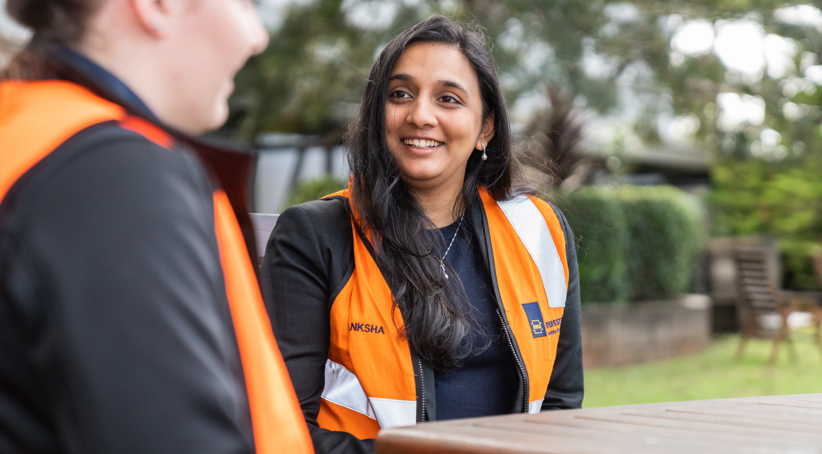
WORK WITH US
Join our global team of diverse and inclusive people engineering innovative solutions that aspire to improve the human condition through responsible access to metals at lower cost.
Read More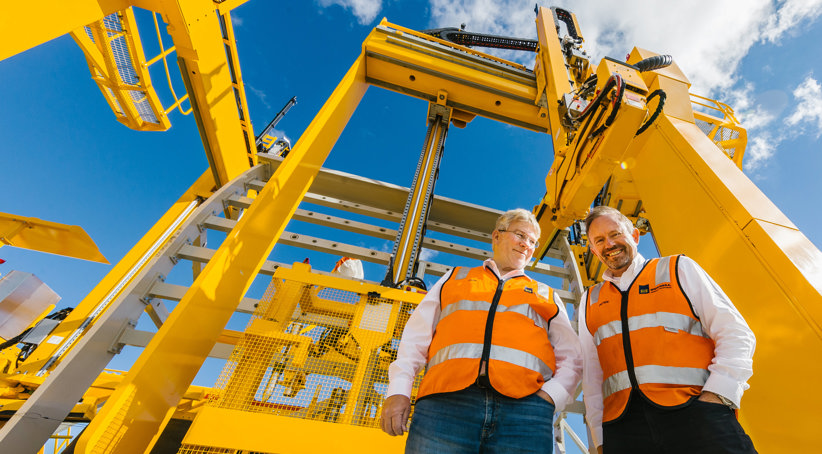
WHAT WE DO
Trusted for almost 40 years as the global leading manufacturer and supplier of fast, reliable, safe, mill relining technologies, asset support and optimisation services.
Read More
